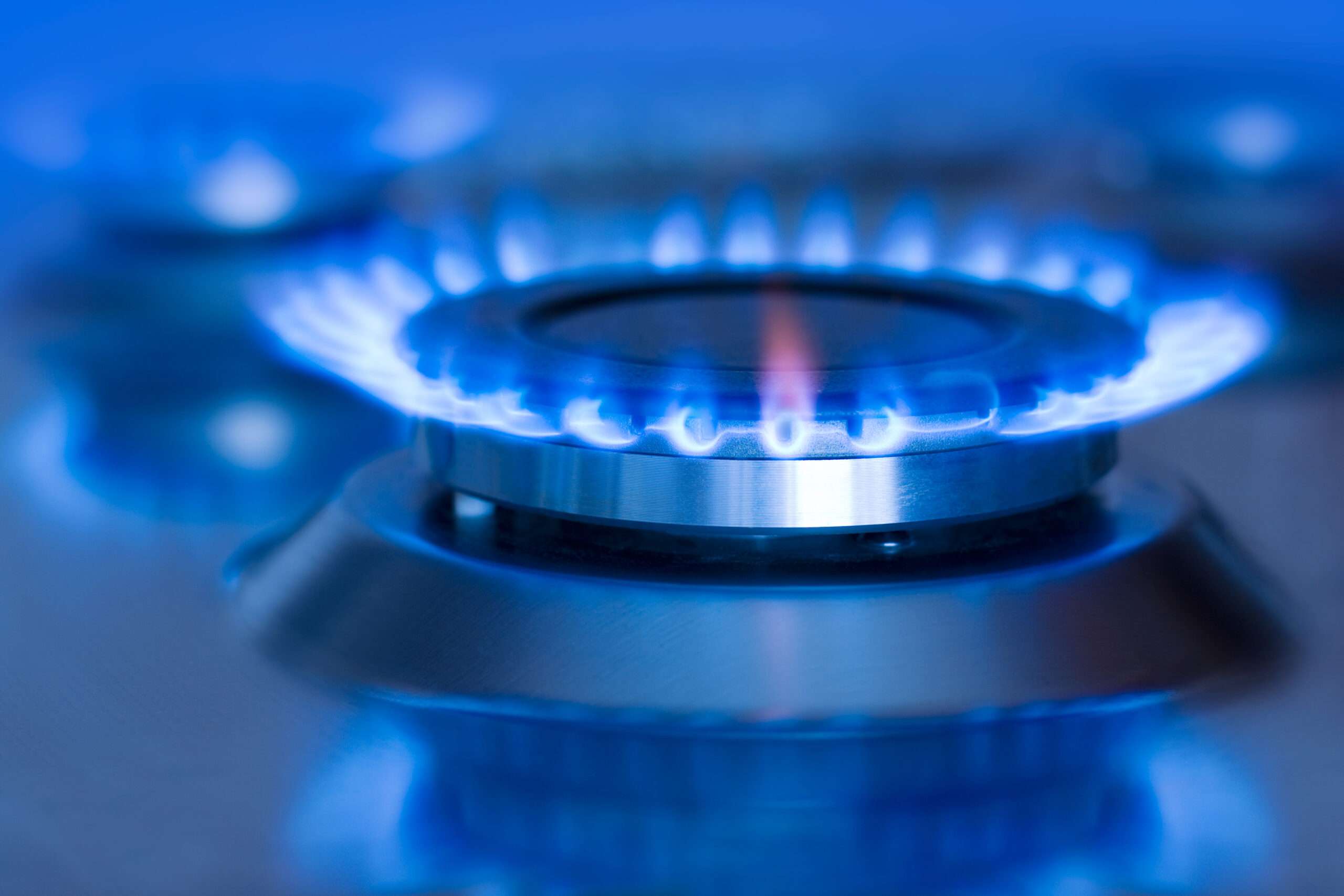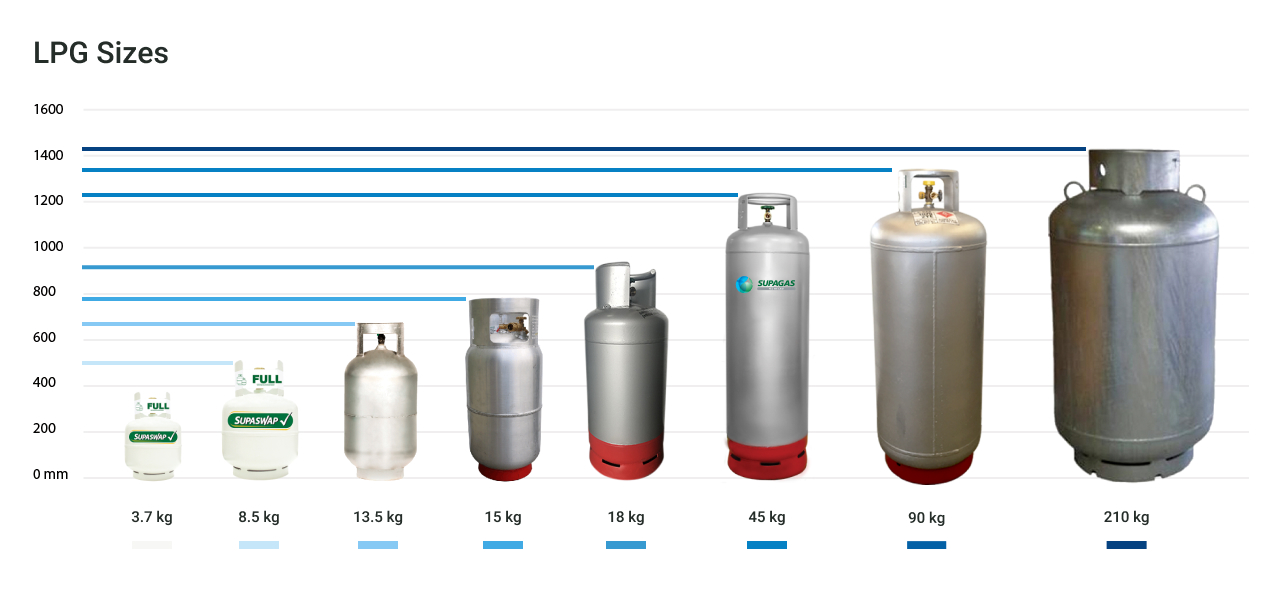Gas Trucking Companies: The Unseen Lifeline of Modern Society
Gas Trucking Companies: The Unseen Lifeline of Modern Society cars.truckstrend.com
In the intricate web of modern commerce and daily life, few industries are as critical, yet as specialized and often overlooked, as gas trucking. These companies are the silent, steadfast arteries that deliver the lifeblood of our economies – from the fuel that powers our vehicles and homes to the essential gases used in manufacturing, healthcare, and agriculture. Far more than just hauling goods, gas trucking companies navigate a complex landscape of highly volatile, cryogenic, or pressurized substances, demanding an unparalleled commitment to safety, precision, and regulatory compliance. Understanding their operations is to grasp a fundamental pillar of our industrialized world.
This comprehensive guide will delve into the multifaceted world of gas trucking companies, exploring their vital functions, the diverse types of gases they transport, the stringent safety protocols that govern their every move, and the operational intricacies that define their success. We will also examine the challenges they face and the innovations shaping their future, offering practical insights for anyone seeking to understand this indispensable industry.
Gas Trucking Companies: The Unseen Lifeline of Modern Society
The Lifeline of Energy: What Gas Trucking Companies Do
At its core, a gas trucking company specializes in the over-the-road transportation of gases, which can be in various forms: compressed, liquefied, or cryogenic. These substances are indispensable to nearly every sector of society.
Their services extend beyond simple point-to-point delivery. Gas trucking companies are integral to:
- Fuel Distribution: Delivering gasoline, diesel, and aviation fuel to service stations, airports, and commercial clients. This keeps transportation networks flowing and businesses operational.
- Residential & Commercial Heating: Transporting propane (LPG) and natural gas (LNG, CNG) to homes, businesses, and agricultural operations not connected to main pipeline grids, especially in rural areas.
- Industrial Supply: Supplying manufacturing plants, chemical facilities, and construction sites with industrial gases like oxygen, nitrogen, argon, hydrogen, and helium, which are crucial for processes ranging from welding and metal fabrication to food preservation and semiconductor production.
- Healthcare Support: Ensuring a steady supply of medical gases, such as oxygen for hospitals and clinics, nitrous oxide for dental practices, and specialized gases for laboratories.
- Specialty Applications: Delivering high-purity gases for scientific research, calibration, and niche industrial processes where precision and purity are paramount.

Often referred to as the "last mile" or "first mile" of the energy and industrial gas supply chain, these companies bridge the gap between production facilities (refineries, gas processing plants, air separation units) and end-users, ensuring a continuous and reliable flow of essential resources. This involves highly specialized equipment, meticulous planning, and expertly trained personnel.
Types of Gas Transported and Their Unique Demands
The diversity of gases transported necessitates a range of specialized equipment and handling procedures. Each type presents its own unique challenges and safety considerations:

-
Liquefied Natural Gas (LNG) & Compressed Natural Gas (CNG):
- LNG: Natural gas cooled to approximately -260°F (-162°C) to become a liquid, significantly reducing its volume. Transported in specialized cryogenic tankers with double walls and vacuum insulation to maintain extreme low temperatures. Primarily used as a cleaner-burning fuel for heavy-duty vehicles, marine vessels, and power generation, especially in areas without pipeline access.
- CNG: Natural gas stored at high pressure (typically 3,000-3,600 psi). Transported in tube trailers, which are long cylinders mounted horizontally on a trailer. Used as an alternative fuel for vehicles and in industrial applications.
- Demands: Strict temperature and pressure management, robust containment, and specialized safety protocols due to the highly flammable nature of natural gas.

-
Liquefied Petroleum Gas (LPG – Propane/Butane):
- Propane and butane are hydrocarbons that are gases at ambient temperatures and pressures but can be liquefied under moderate pressure.
- Transported in: MC-331 pressure vessels (bobtail trucks for local delivery, larger transport trailers for bulk).
- Uses: Residential and commercial heating, cooking, agricultural drying, and as an engine fuel (autogas).
- Demands: Due to flammability and expansion properties, tanks must be designed to withstand significant internal pressure. Drivers require specific training in handling and emergency procedures.
-
Industrial Gases:
- Includes oxygen, nitrogen, argon, hydrogen, helium, carbon dioxide, and acetylene.
- Transported in:
- Cryogenic Liquid Tanks: For oxygen, nitrogen, argon, and CO2, which are liquefied at very low temperatures. Similar to LNG tanks but designed for different temperature ranges.
- High-Pressure Tube Trailers: For hydrogen, helium, and other high-pressure gases, these trailers consist of multiple large, seamless steel tubes.
- Uses: Manufacturing (welding, cutting, inerting), food processing (freezing, packaging), medical applications, electronics, and aerospace.
- Demands: Handling varies greatly by gas; some are inert, others highly flammable or oxidizers. Cryogenic liquids pose severe frostbite risks, while high-pressure gases present explosion hazards if mishandled.
-
Medical Gases:
- Primarily medical oxygen, but also nitrous oxide, medical air, and specific gas mixtures.
- Transported in: Smaller cryogenic tanks or high-pressure cylinders, often requiring dedicated vehicles to maintain purity and prevent contamination.
- Uses: Hospitals, clinics, nursing homes, and home healthcare.
- Demands: Extremely high purity standards, sterile handling, and strict regulatory compliance (e.g., FDA in the US) to ensure patient safety.
-
Specialty Gases:
- Highly pure gases or precise gas mixtures used for calibration, research, environmental monitoring, and specialized manufacturing.
- Transported in: High-purity cylinders or small tube trailers, often with custom valve configurations.
- Demands: Require meticulous handling to maintain purity, often with specific temperature and pressure requirements, and specialized shipping documentation.
The Unwavering Focus: Safety and Regulations in Gas Trucking
Safety is not just a priority in gas trucking; it is the absolute foundation of every operation. The inherent risks associated with transporting flammable, explosive, or cryogenic materials mean that a single error can have catastrophic consequences for people, property, and the environment.
Why Safety is Paramount:
- Flammability/Explosivity: Gases like propane, natural gas, and hydrogen are highly flammable and can ignite or explode if released and exposed to an ignition source.
- Pressure Hazards: Compressed gases are stored under immense pressure, and a rupture can cause a violent explosion or uncontrolled release.
- Cryogenic Hazards: Liquefied gases are extremely cold and can cause severe frostbite upon contact, as well as rapid expansion if warmed, leading to pressure build-up.
- Asphyxiation: Many inert gases (nitrogen, argon) can displace oxygen, posing an asphyxiation risk in confined spaces.
Key Regulatory Bodies and Their Role:
Gas trucking companies operate under a dense web of regulations designed to mitigate these risks. Key regulatory bodies include:
- United States: Department of Transportation (DOT), Occupational Safety and Health Administration (OSHA), Environmental Protection Agency (EPA), Pipeline and Hazardous Materials Safety Administration (PHMSA).
- Canada: Transport Canada.
- Europe: ADR (European Agreement concerning the International Carriage of Dangerous Goods by Road).
- International: IMDG Code (International Maritime Dangerous Goods Code) for intermodal transport.
Regulations Covered:
These regulations dictate virtually every aspect of gas trucking, including:
- Driver Qualifications: Mandatory HazMat (Hazardous Materials) endorsements, specialized training for specific gas types, hours-of-service rules to prevent fatigue.
- Vehicle Specifications & Maintenance: Strict design standards for tankers (e.g., ASME codes), rigorous inspection schedules, pressure testing, and certification requirements.
- Route Planning: Restrictions on routes through tunnels, densely populated areas, or near sensitive infrastructure.
- Emergency Response: Requirement for detailed emergency response plans, spill kits, and communication protocols. Drivers must be trained in initial response procedures.
- Placarding & Documentation: Clear labeling of trucks and tankers with hazardous material placards (DOT placards) and comprehensive shipping papers that identify the gas, its hazards, and emergency contacts.
- Security: Measures to prevent theft or unauthorized access to hazardous materials.
Technology’s Role in Enhancing Safety:
Modern gas trucking companies leverage technology to bolster safety:
- GPS Tracking & Telematics: Real-time monitoring of vehicle location, speed, braking, and driver behavior.
- Remote Monitoring: Sensors on tanks can transmit data on pressure, temperature, and fill levels, alerting dispatch to potential issues.
- Advanced Driver-Assistance Systems (ADAS): Lane departure warnings, collision mitigation systems, and blind-spot monitoring.
- Electronic Logging Devices (ELDs): Ensure compliance with hours-of-service regulations, reducing driver fatigue.
Operational Excellence: The Business of Gas Trucking
Running a successful gas trucking company requires more than just adherence to safety; it demands operational prowess and strategic investment.
- Fleet Management: This involves not only the acquisition of highly specialized and expensive tankers but also their rigorous maintenance. Cryogenic tanks, pressure vessels, and tube trailers all have unique inspection, testing, and repair schedules. Predictive maintenance, leveraging telematics data, is becoming increasingly common to minimize downtime and prevent failures.
- Logistics & Route Optimization: Efficient dispatch and route planning are crucial. Companies use sophisticated software to optimize routes, considering factors like traffic, road conditions, hazardous material restrictions, and customer delivery windows. This minimizes fuel consumption, reduces transit times, and enhances safety.
- Driver Recruitment & Training: The industry faces a persistent driver shortage, exacerbated by the specialized skills required for gas trucking. Companies invest heavily in recruiting, vetting, and providing continuous training for drivers, covering HazMat procedures, specific gas handling, emergency response, and customer service. Retaining experienced drivers is a key competitive advantage.
- Technology Integration: Beyond safety, technology streamlines operations. Fleet management software integrates dispatch, routing, maintenance scheduling, and regulatory compliance. Enterprise Resource Planning (ERP) systems manage finances, inventory, and human resources. Digital invoicing and customer portals improve service efficiency.
Challenges and Future Trends in Gas Trucking
Like any vital industry, gas trucking faces its share of challenges while also adapting to evolving trends.
Current Challenges:
- Driver Shortage: A critical shortage of qualified drivers, particularly those with HazMat endorsements, continues to impact capacity and increase labor costs.
- Fluctuating Fuel Prices: Fuel is a major operational expense, and volatile prices directly impact profitability.
- Stringent Regulations & Compliance Costs: While essential for safety, the complex and ever-evolving regulatory landscape requires continuous investment in training, equipment, and compliance systems.
- Infrastructure Limitations: Roads, bridges, and tunnels can pose challenges for large, heavy hazmat vehicles, sometimes requiring longer, less direct routes.
- Public Perception: "Not In My Backyard" (NIMBY) sentiment can arise regarding the transport of hazardous materials through communities.
- High Capital Investment: Specialized tankers and equipment are expensive to acquire and maintain, creating significant barriers to entry.
Future Trends:
- Alternative Fuels & Hydrogen Transport: As the world shifts towards cleaner energy, the demand for transporting hydrogen (for fuel cells) and potentially other alternative gaseous fuels will grow, requiring new specialized infrastructure and handling.
- Automation & AI: While fully autonomous gas trucks are a distant prospect due to safety complexities, AI and automation are increasingly used for predictive maintenance, advanced route optimization, and back-office operations. Platooning (electronically linked convoys) could enhance efficiency.
- Sustainability & Emissions Reduction: Companies are investing in more fuel-efficient vehicles, optimizing routes to reduce mileage, and exploring cleaner burning fuels for their own fleets (e.g., using LNG to transport LNG).
- Increased Demand for Industrial & Medical Gases: Growing global populations, industrialization, and advancements in healthcare will continue to drive demand for the gases these companies transport.
- Enhanced Connectivity & Data Analytics: Real-time data from vehicles and operations will be used for more sophisticated decision-making, optimizing everything from maintenance schedules to customer service.
Practical Advice and Actionable Insights
For those looking to engage with or enter the gas trucking industry:
- For Aspiring Drivers: Obtain your Commercial Driver’s License (CDL) with a HazMat endorsement. Seek out specialized training programs offered by reputable trucking schools or directly by gas trucking companies. A strong safety record and commitment to continuous learning are paramount.
- For Businesses Needing Gas Transport: Prioritize safety and compliance when selecting a gas trucking partner. Look for companies with strong safety ratings, a transparent regulatory compliance history, modern fleets, and robust emergency response plans. Inquire about their driver training programs and technological capabilities.
- For Gas Trucking Companies (or New Entrants):
- Invest in Safety First: This isn’t just about compliance; it’s about reputation, risk mitigation, and long-term viability. Implement robust safety management systems.
- Embrace Technology: Leverage telematics, fleet management software, and AI-driven tools to optimize operations, enhance safety, and improve efficiency.
- Focus on Driver Retention: Create a positive work environment, offer competitive pay and benefits, and invest in ongoing training to attract and retain skilled drivers.
- Diversify Services (where appropriate): Explore opportunities in various gas segments (industrial, medical, specialty) to mitigate market fluctuations.
- Stay Ahead of Regulations: Proactively monitor regulatory changes and invest in the necessary upgrades and training to remain compliant.
Concluding Summary
Gas trucking companies are more than just logistics providers; they are highly specialized, safety-driven organizations that form an indispensable backbone of modern infrastructure. From the gas stations powering our commutes to the hospitals saving lives, their unwavering commitment to safely transporting volatile and critical substances enables countless industries and supports daily living. Despite facing significant challenges, including a persistent driver shortage and the need for continuous regulatory adaptation, the industry is poised for evolution, driven by technological advancements and the increasing global demand for diverse gaseous products. The future of gas trucking will undoubtedly be defined by its continued dedication to operational excellence, innovation, and, above all, an unyielding commitment to safety.
Table: Factors Influencing Gas Transportation Service Costs
Understanding the cost of gas transportation services is complex, as it’s not a single fixed price but rather a dynamic calculation based on numerous variables. The table below outlines the primary factors that gas trucking companies consider when quoting services:
| Factor | Description | Impact on Cost |
|---|---|---|
| Type of Gas | LNG, LPG, Industrial (Oxygen, Nitrogen), Medical, Specialty. Different handling, temperature/pressure requirements, and equipment needed. | High: Specialty gases, cryogenic gases (LNG, Oxygen) due to specialized equipment, stringent handling, and higher inherent risks. Medium: LPG, common industrial gases. |
| Volume/Quantity | The amount of gas to be transported (e.g., gallons of LPG, cubic meters of industrial gas, number of cylinders). | Lower per unit for higher volumes: Companies can achieve economies of scale for larger shipments. |
| Distance | Total mileage from origin (loading point) to destination (delivery point). | Directly proportional: Longer distances mean higher fuel, driver labor, vehicle wear-and-tear, and insurance costs. |
| Route Complexity | Urban vs. rural, mountainous terrain, tolls, permits for oversized/overweight loads, hazmat restrictions (e.g., tunnel bans, bridge weight limits). | High: Difficult terrain, significant tolls, routes requiring special permits, escorts, or detours due to hazmat restrictions. |
| Delivery Frequency | One-time delivery vs. regular, recurring deliveries (e.g., daily, weekly, monthly). | Lower per delivery for recurring contracts: Companies can optimize routes, schedule drivers, and allocate resources more efficiently, leading to potential discounts. |
| Loading/Unloading Time | Time required at origin and destination, including hook-up, safety checks, transfer procedures, and disconnect. | Higher: If significant waiting times or complex, time-consuming procedures are involved. Demurrage (detention) charges may apply for excessive delays beyond standard free time. |
| Special Handling | Requirements for specific temperature maintenance (e.g., re-cooling cryogenic tanks), inerting, specialized on-site equipment (e.g., pumps, vaporizers provided by carrier). | High: Requires specialized training, additional equipment, and potentially more personnel, increasing operational complexity and risk. |
| Emergency Response Preparedness | Level of preparedness and on-site support required, including specific response plans for certain chemicals or locations. | Included: Generally factored into the overall service cost due to stringent regulatory requirements and the inherent risks of the materials transported. |
| Market Conditions | Current fuel prices, driver availability, overall demand for trucking services, regional economic factors, competitive landscape. | Variable: Can significantly impact prices, especially for spot market (one-off) deliveries, due to supply and demand dynamics. |
| Insurance & Compliance | Cost of specialized hazardous materials insurance, compliance with federal and state regulations, permitting, and safety certifications. | High: A significant fixed and variable cost for gas trucking companies, directly passed on to customers as part of the service fee. |
| Equipment Type | Type of tanker (e.g., MC331 for LPG, DOT407 for specific chemicals, cryogenic tanks, tube trailers). | Higher: For specialized, high-capacity, or technically advanced tanks that require more maintenance, have higher initial investment costs, and may have lower utilization rates due to niche use. |
| Additional Services | On-site inventory management, telemetry installation and monitoring, emergency top-offs, equipment rental, technical support, regulatory consulting. | Adds to cost: These are value-added services that go beyond basic transportation and provide additional convenience, safety, or efficiency to the customer. |
Frequently Asked Questions (FAQ) about Gas Trucking Companies
Q1: What is a gas trucking company?
A1: A gas trucking company specializes in the over-the-road transportation of various gases, which can be compressed, liquefied, or cryogenic. They use specialized tanker trucks and trailers to deliver these gases for industrial, commercial, residential, and medical applications.
Q2: What types of gases do these companies transport?
A2: They transport a wide range, including fuels like Liquefied Natural Gas (LNG), Compressed Natural Gas (CNG), and Liquefied Petroleum Gas (LPG – propane/butane); industrial gases such as oxygen, nitrogen, argon, hydrogen, and carbon dioxide; medical gases like oxygen and nitrous oxide; and various specialty gases used in research and specific industries.
Q3: What are the main safety concerns in gas trucking?
A3: The primary safety concerns revolve around the inherent properties of the gases: flammability/explosivity (for fuels), high pressure (for compressed gases), extreme cold (for cryogenic liquids causing frostbite), and asphyxiation (for inert gases displacing oxygen). Strict regulations and extensive training mitigate these risks.
Q4: Do drivers need special licenses to haul gas?
A4: Yes, drivers must possess a Commercial Driver’s License (CDL) with a Hazardous Materials (HazMat) endorsement. They also typically undergo additional specialized training specific to the types of gases they transport and the handling of specialized equipment.
Q5: How is the cost of gas transportation determined?
A5: Costs are influenced by numerous factors, including the type and volume of gas, the distance and complexity of the route, delivery frequency, special handling requirements (e.g., cryogenic), loading/unloading times, market conditions (fuel prices, driver availability), and the significant costs of insurance and regulatory compliance.
Q6: What regulations govern gas trucking?
A6: Gas trucking is heavily regulated by government bodies such as the Department of Transportation (DOT) and Pipeline and Hazardous Materials Safety Administration (PHMSA) in the US, Transport Canada, and international agreements like ADR. These regulations cover vehicle specifications, driver qualifications, route planning, emergency response, and documentation.
Q7: What is the difference between LNG and LPG transport?
A7: LNG (Liquefied Natural Gas) is natural gas cooled to an extremely low temperature (-260°F/-162°C) and transported in specialized cryogenic tanks. LPG (Liquefied Petroleum Gas, primarily propane and butane) is liquefied under moderate pressure at ambient temperatures and transported in different types of pressure vessels (e.g., MC-331 tankers). Both are fuels, but their storage and transport methods differ significantly.
Q8: How do gas trucking companies ensure environmental safety?
A8: They employ rigorous safety protocols, maintain fleets to high standards to prevent leaks, train drivers in spill prevention and emergency response, and adhere to environmental regulations set by bodies like the EPA. Many also invest in fuel-efficient vehicles and route optimization to reduce their carbon footprint.
Q9: Is there a driver shortage in gas trucking?
A9: Yes, the trucking industry as a whole faces a driver shortage, and it is particularly pronounced in specialized sectors like gas trucking due to the additional training, endorsements, and responsibilities required. This drives up labor costs and impacts capacity.
Q10: What are future trends in the gas trucking industry?
A10: Future trends include the growing transport of alternative fuels like hydrogen, increased adoption of automation and AI for logistics and predictive maintenance, a stronger focus on sustainability and emissions reduction, and continued technological integration to enhance safety and efficiency.






